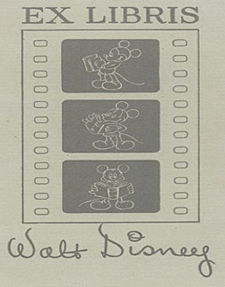Bookplates have been around since at least the 15th
century. I touched on them a bit when I did my blog on provenance, but I’d like
to go more in-depth about them.
First and foremost, bookplates are an individualized way for
the owner of a book to identify him or herself. But bookplates can also be
works of art. Artists and engravers such as Albrecht Dürer, M.C. Escher, Paul Revere, Rockwell Kent, and Leonard Baskin have designed bookplates.
 |
| Hieronimi Ebner's bookplate by Albrecht Dürer |
 |
| Rockwell Kent's bookplates |
Bookplates can be created with a number of techniques, from
the classic pen and ink to woodcuts, linocuts, metal engraving, etching, and
even silk screening. It is common for these small-scale works of art to be hand
printed on fine paper.
Both individuals and institutions can have bookplates.
Notable people who have a personal bookplate include Queen Victoria, George
Washington, Franklin D. Roosevelt, Sigmund Freud, Walt Disney, and Jack London.
Institutions that are likely to have bookplates are public and private
libraries, universities, law firms, and museums.
 |
| George Washington's bookplate |
 |
| Walt Disney's bookplate |
As part of this class, we were encouraged to design our own
bookplate. Mine (so far) incorporates a stack of books, because I have always
loved reading, and a cat perched on the stack that looks like my cat, because I
love animals (especially my cat). I also want to incorporate a magnifying
glass, because I love mystery novels, Nancy Drew, and I am a criminal justice
major.
 |
| Semi-rough sketch/idea for my bookplate |





No comments:
Post a Comment